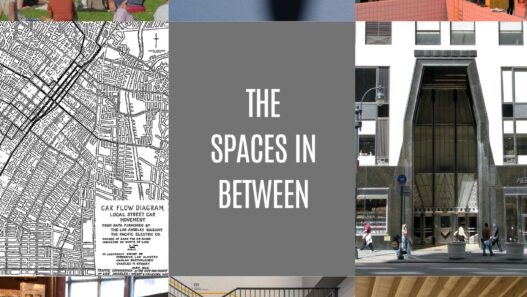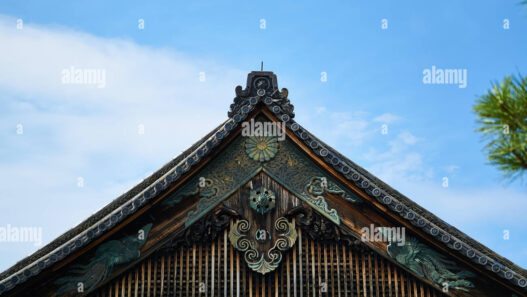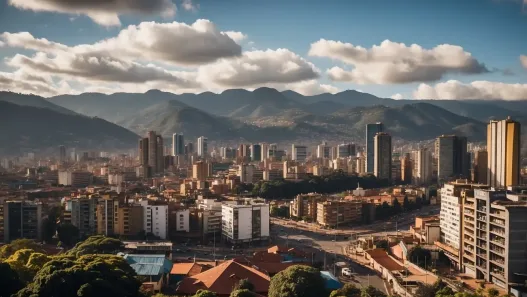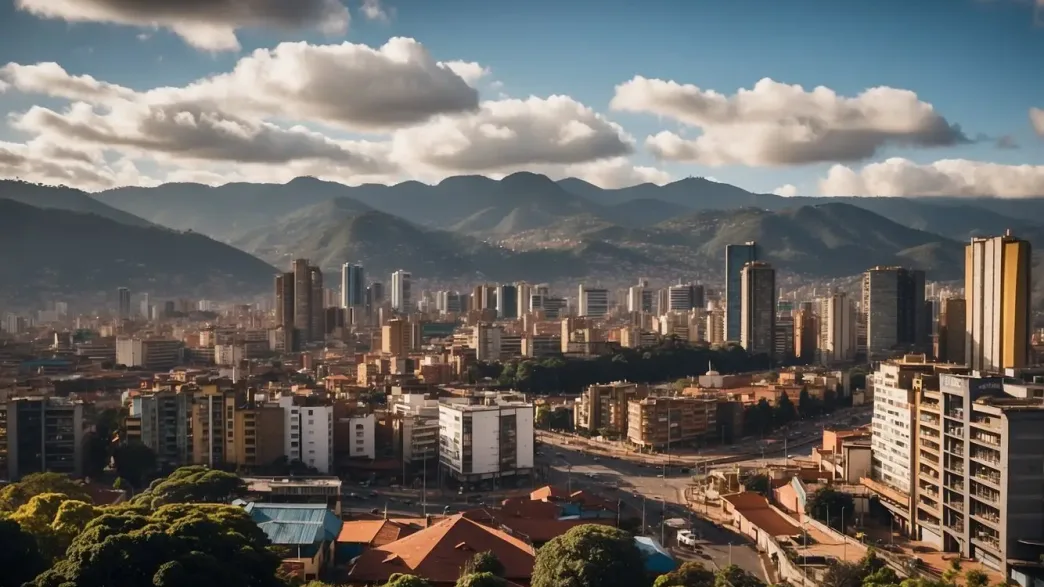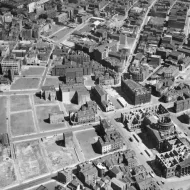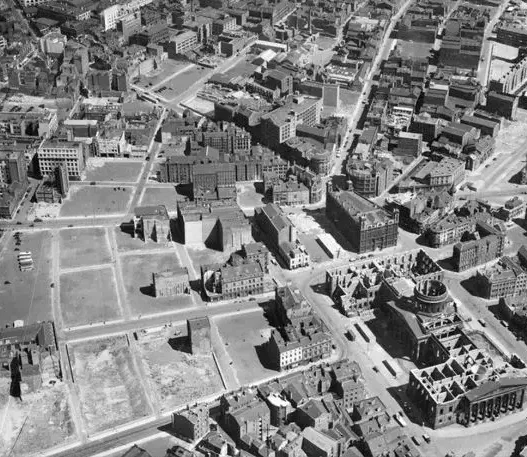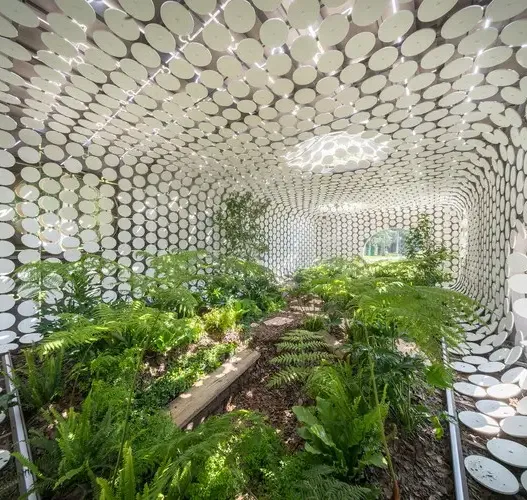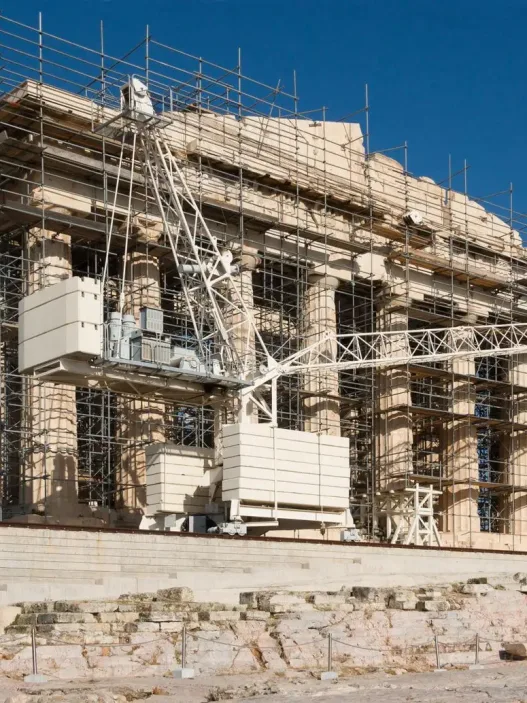Bogotá, the capital of Colombia, is a vibrant tapestry of history, culture and innovation. Nestled in the Andes mountains, the cityscape is a reflection of its complex past and dynamic present. Over the years, Bogotá has undergone significant transformations, especially in its approach to urban planning and architecture.

Overview of Bogotá’s History
Bogotá’s history is rich and varied, beginning with its founding by the Spanish conquistador Gonzalo Jiménez de Quesada. Originally called Bacatá, the city was built on the ruins of a Muisca settlement. During the colonial period, Bogotá became an important cultural and political center in South America. The 19th and 20th centuries brought significant challenges, such as political turmoil and social strife, as well as opportunities for growth and modernization. The city’s evolution reflects broader national narratives that encompass both periods of prosperity and hardship, shaping a unique urban identity that continues to evolve today.
The Importance of Urban Renewal
Urban renewal in Bogotá has become a critical focus for urban planners and architects, especially as the city grapples with rapid population growth and urban sprawl. The need for renewal stems from a variety of problems, including inadequate infrastructure, environmental degradation and social inequality. By revitalizing neglected areas, Bogotá aims to improve the quality of life of its residents and promote sustainable growth. Urban renewal initiatives have led to the restoration of public spaces, the improvement of transportation systems and the integration of green spaces, creating a more livable and inclusive urban environment.
Key Architectural Impacts
Bogotá’s architectural landscape is a mosaic of styles that reflect its historical influences. Colonial architecture is evident in the charming plazas and churches, characterized by baroque and neoclassical elements. As the city modernized, the influence of international styles became evident with the emergence of modernist and postmodernist designs. Today, innovative architecture coexists with traditional structures, demonstrating a commitment to preserving the past while embracing the future. The iconic Torre Colpatria and the contemporary designs of the Bogota Botanical Garden are important examples that emphasize the architectural diversity of the city.
The Role of Street Life in Urban Design
Street life is the heartbeat of Bogotá and brings energy and vitality to the city. Streets serve not only as passageways but also as shared spaces where social interactions flourish. The design of Bogotá’s urban environment encourages pedestrian activity through pedestrian-friendly plazas, vibrant markets and cultural events in public spaces. This focus on street life has important implications for urban design as it encourages community participation and inclusivity. Initiatives such as Ciclovía, where main roads are closed to vehicular traffic on Sundays, exemplify the city’s commitment to promoting active lifestyles and reconnecting citizens with their urban environment.
Objectives of the Post
This paper aims to explore the complex relationship between Bogotá’s rich history, architectural diversity and the vibrant street life that shapes its urban identity. By emphasizing the importance of urban regeneration, we can appreciate the city’s efforts to create a more sustainable and inclusive environment. Understanding these elements not only sheds light on Bogotá’s unique character, but also serves as a model for other cities facing similar challenges. Through this exploration, we hope to inspire a deeper appreciation for the role of architecture and urban design in fostering community and improving the quality of urban life.
Historical Context of Bogotá Architecture
Understanding Bogotá’s architectural landscape requires a journey through its rich historical context. The city’s architecture is a tapestry woven from pre-colonial influences, colonial legacies, independence movements and modernist endeavors. Each stage of its development reflects the cultural, social and political transformations that have shaped the city over the centuries.
Pre-Colonial Influences
Before the arrival of the Spanish, Bogotá was inhabited by the Muisca people, who built a sophisticated urban society. Their architecture was primarily functional but deeply integrated with the natural environment. The Muiska built their dwellings in harmony with the landscape, using materials such as mud and wood. Ceremonial structures, such as temples, demonstrated their spiritual beliefs and community values. This connection to nature formed the basis of Bogotá’s future architectural identity, emphasizing the importance of place and community.
Colonial Architecture
The arrival of the Spanish colonizers in the 16th century brought a dramatic change in Bogotá’s architectural character. The new settlers imposed European styles, leading to the construction of grand churches, plazas and government buildings. Notable examples include the imposing Catedral Primada and Palacio de San Carlos, which combine Gothic and Baroque elements. These buildings reflect the power dynamics of colonial rule and the influence of the Catholic Church. The use of local materials, such as adobe, blended with European styles to create a unique architectural language that still resonates in the historic center of the city.
Post-Independence Developments
With Colombia’s independence in the early 19th century, Bogotá underwent significant transformations. The architectural landscape began to reflect national pride and identity. Neoclassical influences became especially prominent in public buildings. The construction of the Capitolio Nacional in the 1920s symbolized the new republic’s ambitions of grandeur and authority. Urban planning also took shape during this period, with the introduction of parks and boulevards that improved the quality of life for residents. Bogotá’s architecture began to tell the story of a nation reclaiming its identity.
Modernist Movements
The mid-20th century marked a crucial period for Bogotá’s architecture, with the spread of modernist movements. Architects sought to break with historical styles to embrace functionality, simplicity and new materials. During this period, iconic buildings emerged that exemplified the integration of modernism with local culture, such as Torres del Parque, designed by renowned architect Rogelio Salmona. The use of brick and open spaces in these designs encourages community interaction, reflecting the vibrancy of street life that defines Bogotá today.
Latest Trends in Architecture
In recent years, Bogotá has experienced a renaissance in urban renewal, driven by the need for sustainable development and social inclusion. New architectural projects focus on revitalizing neglected areas while respecting the city’s historical context. Initiatives such as the TransMilenio bus rapid transit system have not only improved transportation, but have also triggered urban development in the surrounding area. Architects are increasingly prioritizing green spaces and community involvement in their designs, leading to innovative projects that enhance the urban fabric. The city’s architecture continues to evolve, blending tradition with modernity and responding to the dynamic needs of its residents.
Ultimately, the historical context of Bogotá’s architecture is a reflection of its journey through time. From pre-colonial roots to modernist innovations, each phase has contributed to a rich architectural fabric that celebrates both its heritage and its aspirations for the future. As Bogotá continues to grow and change, its architecture remains a living testament to the city’s unique identity and the spirit of its people.
Bogotá, the capital of Colombia, is a city thriving on the interplay between its rich history and dynamic contemporary life. Known for its vibrant street culture, Bogotá is not only a center of political and economic activity; it is also a canvas for architectural innovation and urban renewal. The city’s architectural landscape reflects a mix of colonial heritage, modern designs and a commitment to sustainability, making it a fascinating subject for exploration.
Key Architectural Features of Bogotá
Iconic Buildings and Landmarks
In Bogotá, iconic buildings tell the story of the city’s evolution. One of the most recognizable landmarks is **Plaza de Bolívar**, surrounded by historic buildings such as **Capitolio Nacional** and **Primatial Cathedral**. These buildings showcase colonial architecture, with intricate facades and majestic columns that reflect Bogotá’s past.
Modern architecture also has a strong presence in the city and **Torre Colpatria** stands as a symbol of progress. Once the tallest building in Colombia, this skyscraper is notable for its striking design and colorful lighting that illuminates the night sky. Another notable example is the **Museo del Oro**, which combines modern architectural principles with elements reflecting indigenous culture to create a space that is both functional and evocative.
These buildings not only beautify the skyline, but also serve as focal points for social interaction, drawing both locals and tourists to engage with the city’s history and culture.
Urban Public Spaces
Bogotá’s public spaces are vital for vibrant street life. **Ciclovía**, a weekly event where main streets are closed to vehicular traffic, transforms the city into a pedestrian-friendly space filled with cyclists, runners and families. This initiative promotes healthy living and encourages social interaction between residents.
Parks such as Simón Bolívar Park** provide a green oasis amidst the urban bustle, offering recreational opportunities and cultural events. Integrating public art installations and performance spaces into these parks enhances their role as cultural hubs. Such spaces are designed to encourage community participation and are essential for the social fabric of the city.
Transportation Infrastructure
Bogotá’s transportation network is a testament to its adaptive urban planning. The **TransMilenio**, a rapid bus transit system, has revolutionized public transportation in the city. Dedicated bus lanes enable efficient travel between various neighborhoods, significantly reducing traffic congestion.
The design of TransMilenio stations reflects a commitment to the user experience with its modern aesthetics and functional layout. In addition, the city has invested in expanding bike lanes, promoting environmentally friendly transportation and supporting a healthier lifestyle. This blend of public transportation options not only increases mobility but also reduces the city’s carbon footprint.
Sustainable Design Practices
In response to global environmental issues, Bogotá has adopted sustainable design practices in its architecture. The Eco-Block** initiative focuses on constructing buildings that use energy-efficient materials and technologies, reduce energy consumption and minimize waste.
Projects such as the Sustainable Urban Development Plan** aim to increase green spaces and integrate nature into the urban environment. Innovations such as rainwater harvesting systems and green roofs are becoming increasingly common, allowing buildings to coexist harmoniously with their surroundings. This commitment to sustainability not only addresses environmental concerns, but also improves the quality of life for residents.
Integration of Art and Architecture
The integration of art into Bogotá’s architectural landscape is a defining feature of the city. Murals and street art can be found in neighborhoods like **La Candelaria**, where vibrant colors and bold designs reflect the cultural identity of the community. These artworks are often created by local artists and transform public spaces into open-air galleries that invite dialog and reflection.
Architectural projects increasingly incorporate artistic elements such as sculptures and installations that enhance the aesthetic appeal of buildings while telling stories about the city’s heritage. This combination of art and architecture promotes a sense of belonging and pride among the city’s residents, distinguishing Bogotá as a city where creativity flourishes.
As a result, Bogotá’s architectural features form a rich tapestry that celebrates its past while paving the way for a sustainable and vibrant future. The city’s commitment to integrating iconic buildings, public spaces, transportation infrastructure, sustainable practices and art into its urban fabric not only enhances its aesthetic appeal, but also enriches the lives of its residents. As Bogotá continues to evolve, it remains a powerful example of how architecture can inspire community and spur urban renewal.
The Role of Street Life in Urban Renewal
Urban renewal is a dynamic process that reshapes cities and breathes new life into neglected areas. In Bogotá, Colombia, street life plays a crucial role in this transformation. Streets are not just busy thoroughfares; they are vibrant places full of stories, culture and community. This chapter examines how the essence of street life in Bogotá contributes to urban regeneration, enhances the city’s identity and promotes social cohesion.
Defining Street Life in Bogotá
Street life in Bogotá is a tapestry woven from the daily activities of its inhabitants. It encompasses everything from bustling markets to lively squares where locals gather to socialize. Each of the city’s various neighborhoods has its own unique character, influenced by the history, culture and people who live there. In the historic La Candelaria district, for example, cobblestone streets are lined with colonial buildings that are home to artists, musicians and street performers. This vibrant scene not only attracts tourists, but also serves as a cultural hub for residents, fostering a sense of belonging and community pride.
Street life in Bogotá is characterized by its energy and flexibility. People from different backgrounds come together in these public spaces, creating an environment rich in interaction and collaboration. The sounds of street musicians, the sights of local artisans at work and the aromas of food vendors selling traditional Colombian dishes create an immersive experience unique to Bogotá.
The Impact of Street Vendors
Street vendors are an important component of Bogotá’s street life and significantly influence the city’s urban landscape. These enterprising individuals offer not only food, but also a range of goods and services that reflect the city’s diverse culture. They occupy sidewalks, plazas and even roads, transforming ordinary spaces into bustling marketplaces.
The presence of street vendors contributes to the economy by creating jobs and supporting local businesses. Offering accessible products at affordable prices makes them indispensable for many residents. For example, whether it is a quick breakfast of arepas or a handmade craft, these vendors fulfill the daily needs of passers-by. Moreover, street vending fosters an informal economy that empowers individuals and enables them to become entrepreneurs in their own right.
However, the role of street vendors extends beyond economic contributions; they also enhance the social fabric of the city. Vendors bring people together in vibrant, shared spaces, creating opportunities for interaction and cultural exchange. This informal setting often leads to the formation of friendships and networks, further enriching community bonds.
Community Loyalty and Engagement
Community engagement is at the heart of Bogotá’s urban renewal efforts, and street life is a catalyst for this engagement. Residents are actively involved in shaping their neighborhoods, voicing their needs and aspirations through various platforms. The city government supports this participation through initiatives that promote local decision-making and planning.
For example, community meetings are often organized in public spaces and allow residents to discuss issues such as safety, sanitation and urban development. This participatory approach empowers citizens, giving them a stake in the development of their environment. The result is a more inclusive urban environment where different voices are heard and solutions are developed collaboratively.
Furthermore, public art projects and mural painting events bring artists and community members together, further strengthening ties and beautifying streets. These initiatives not only increase the visual appeal of the city, but also instill a sense of ownership and pride among its residents.
Festivals and Cultural Events
Festivals and cultural events play an important role in enriching Bogotá’s street life. Throughout the year, the city hosts various celebrations that showcase its rich cultural heritage and diverse artistic expressions. Events such as the Bogotá International Book Fair and Festival de Verano attract thousands of people, transforming the streets into vibrant venues filled with music, dance and art.
These festivals not only celebrate local traditions, but also promote tourism by attracting visitors from around the world. They create a festival atmosphere that encourages community participation and pride, allowing residents to share their culture with others. Streets become the stage for performances, workshops and exhibitions, transforming urban areas into vibrant hubs of creativity.
Moreover, these events contribute to urban regeneration by revitalizing underutilized areas and encourage local businesses to thrive during peak times. An influx of visitors often leads to increased investment in infrastructure and services, further improving the urban environment.
Safety and Accessibility Considerations
As street life in Bogotá evolves, the importance of safety and accessibility cannot be overlooked. Urban renewal efforts must address these concerns to ensure that all residents feel comfortable and safe in public spaces. The city has taken important steps in recent years by implementing measures to improve safety, such as increased police presence and community watch programs.
Furthermore, accessibility is a key element in creating inclusive urban environments. Bogotá has made significant investments in public transport and pedestrian infrastructure, including the TransMilenio bus rapid transit system, which connects various neighborhoods and reduces traffic congestion. Improved sidewalks and bike lanes also encourage residents to explore their city on foot or by bike, promoting a healthier lifestyle.
By prioritizing safety and accessibility, Bogotá is not only improving the quality of life of its residents, but also encouraging greater participation in street life. When people feel safe and have the ability to easily navigate their city, they interact more with their surroundings, fostering a vibrant and inclusive urban society.
As a result, the role of street life in Bogotá’s urban transformation is multifaceted and profound. From the bustling activity of street vendors to the communal spirit of festivals, the streets are alive with energy and creativity. By encouraging community engagement, addressing safety and celebrating cultural richness, Bogotá is not only renewing its urban landscape; it is developing a vibrant, interconnected city that thrives on the spirit of its people.
Bogotá, Colombia, is a city full of life, culture and history, making it a fascinating case study in urban renewal. As the capital, it serves as the center of political, social and economic activity. Over the years, Bogotá has undertaken several successful urban renewal projects aimed not only at improving the city’s infrastructure, but also at fostering a vibrant public life. This research examines specific initiatives that have transformed Bogotá into a more accessible, inclusive and dynamic urban landscape.
Case Studies of Successful Urban Transformation Projects
Revitalization of the La Candelaria Region
The historic heart of Bogotá, La Candelaria is an area rich in colonial architecture and cultural significance. However, it has fallen into disrepair over the years, plagued by crime and neglect. Recognizing its potential, city planners launched a revitalization project that focused on restoring historic buildings while improving public spaces.
The transformation included renovating facades, improving lighting and creating pedestrian-friendly zones. This not only attracted tourists, but also revitalized local businesses, creating a thriving atmosphere. Cultural festivals and art exhibitions are now commonplace and have breathed new life into the streets. The revitalization of La Candelaria shows how heritage preservation can coexist with modern urban needs, creating a unique mix of old and new.
Ciclovía: Turning Streets into Public Spaces
Every Sunday, the streets of Bogotá are transformed into vibrant public spaces through the Ciclovía program. This initiative closes main roads to vehicular traffic, allowing pedestrians and cyclists to take over the streets. The concept started in the 1970s but has grown into a beloved weekly tradition that emphasizes health, community and sustainable transportation.
Ciclovía not only promotes physical activity, but also social interaction between different groups of people. Families, friends and strangers come together to enjoy the city in a new light. Local vendors are often set up along the routes, adding to the festive atmosphere. This initiative demonstrates how redesigning urban areas can significantly increase community participation and public health.
Bogota River Revitalization Project
Once a neglected waterway, the Bogotá River has undergone a major transformation aimed at ecological restoration and urban integration. The revitalization project aims to clean the river, restore its banks and create green spaces for the city’s residents.
The project develops parks, walkways and recreational areas along the river, increasing biodiversity and providing a tranquil escape from the crowded city. The initiative promotes sustainable practices and raises awareness of environmental issues. As a result, the river has become a vital element in Bogotá’s urban fabric, connecting neighborhoods and fostering a sense of community.
The Role of Public Art Installations
Public art has become an important element of Bogotá’s urban renewal efforts, enriching the city’s cultural landscape. Murals, sculptures and installations are strategically placed in public spaces, transforming ordinary streets into open-air galleries. Artists from Bogotá and beyond contribute to this vibrant scene, reflecting on social issues, celebrating history and inspiring dialogue.
These artworks not only beautify the environment, but also promote civic pride and engagement. They transform neglected areas into points of interest, attracting visitors and locals alike. Public art has become a powerful tool for cultural expression and community identity, demonstrating how creativity can play an important role in urban regeneration.
Lessons Learned from Each Project
The success of these urban renewal projects in Bogotá offers valuable lessons for cities around the world. First, community engagement is crucial; involving local residents in the planning process ensures that projects meet their needs and aspirations. Second, balancing heritage preservation with modern development can create spaces that honor the past while embracing the future.
Furthermore, initiatives such as Ciclovía emphasize the importance of redesigning street use to encourage community interaction and promote healthier lifestyles. Finally, integrating public art into urban spaces can significantly enhance a city’s cultural vitality and invite participation and dialogue among residents.
In conclusion, Bogotá’s urban renewal journey exemplifies the transformative power of thoughtful planning and community engagement. Each project not only revitalizes physical spaces, but also enriches the spirit of the city, making it a living testament to the resilience and creativity of its people.
The Future of Bogotá’s Architecture and Urban Planning
As Bogotá moves into the future, its architecture and urban planning are at an important crossroads. With a rich tapestry of culture, history and vibrant street life, the city is ready to embrace innovative solutions that address the challenges of urban renewal while promoting sustainability and community engagement.
Challenges of Urban Renewal
Bogotá is not without obstacles to urban regeneration. The city struggles with rapid population growth, inadequate infrastructure and social inequality. As more people flock to the city in search of opportunity, the pressure on housing, transportation and public services is increasingly evident. Moreover, informal settlements often lack basic amenities, highlighting the need for inclusive planning that takes into account all residents. This challenge is compounded by environmental concerns, as Bogotá faces threats from climate change, such as flooding and air pollution. Addressing these issues requires a delicate balance between development and the preservation of Bogotá’s unique cultural identity.
Innovations in Architectural Design
In response to these challenges, Bogotá is witnessing a surge in innovative architectural designs that prioritize functionality and aesthetics. Architects and urban planners are exploring the use of sustainable materials and technologies that not only reduce environmental impact but also enhance the urban landscape. For example, the integration of green roofs and vertical gardens into new buildings promotes biodiversity and improves air quality. Moreover, the rise of smart city technologies is transforming the way urban areas are managed, enabling real-time data analysis to improve traffic flow and public safety. These innovations reflect a commitment to creating a city that is not only visually stunning, but also flexible and adaptable to changing conditions.
Sustainable Development Vision
Sustainability is at the heart of Bogotá’s future architectural vision. The city aims to create a more livable environment by encouraging mixed-use developments that combine residential, commercial and recreational spaces. This approach encourages walkability, reducing reliance on cars and strengthening a sense of community. The emphasis on public transportation is another critical element, with projects such as the TransMilenio bus rapid transit system serving as a model for efficient public transport. In addition, initiatives to develop green spaces and urban parks are crucial for improving the quality of life of urban residents, providing places of rest and relaxation amidst the bustling urban environment.
Community Participation in Future Projects
Community participation is an important component of Bogotá’s urban renewal strategy. Involving residents in the planning process ensures that developments reflect their needs and aspirations. Local workshops and forums are organized to gather input from different groups, bringing a more democratic approach to urban planning. This participatory model not only empowers residents, but also fosters a sense of ownership and pride in their neighborhoods. Projects such as the revitalization of public squares and community centers are excellent examples of how collaboration can lead to spaces that truly reflect local culture and heritage.
Discover more from Dök Architecture
Subscribe to get the latest posts sent to your email.



